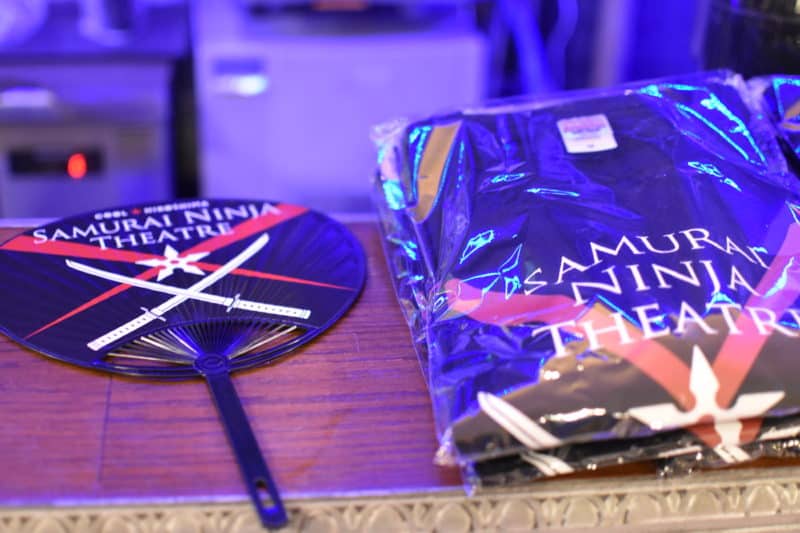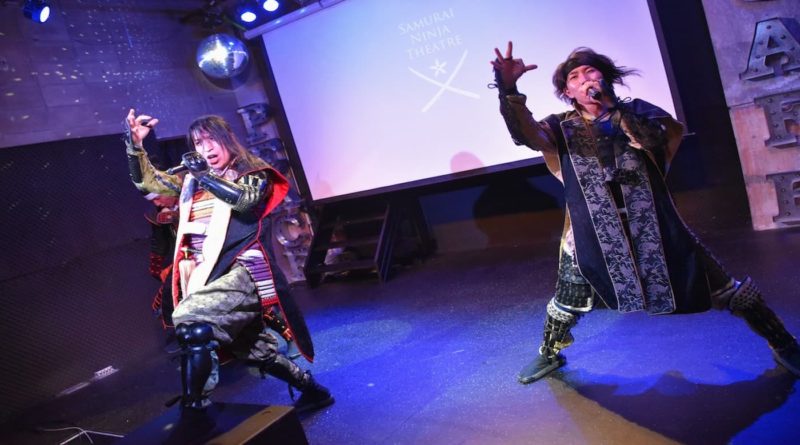Samurai Ninja Theatre
The Aki Hiroshima Bushotai have been a regular feature at Hiroshima for several years. Dressed in samurai costume, they greet visitors in character in olde-worlde Japanese, perform set piece sword battles and even song and dance routines.
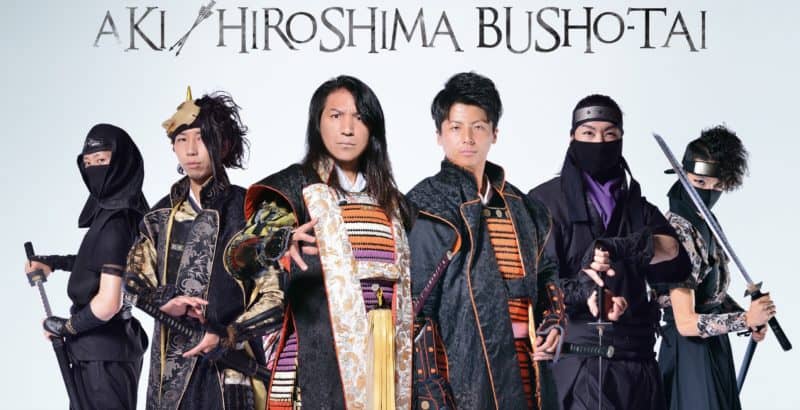
While only loosely based on history, it is a concept that has proved very popular and the group has quite a passionate following.
Now, with an eye on the tourist market and aiming to help fill Hiroshima’s perceived lack of night time activities and entertainment they have taken their show inside, performing most Saturday nights on the stage at Peace Cafe in Hatchobori.
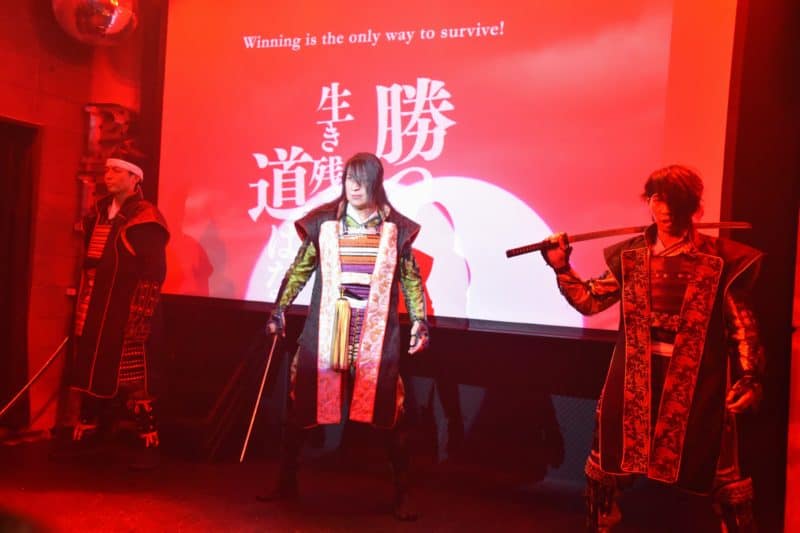
The one hour show costs ¥2000, though the fee includes a soft drink, beer or cocktail which can be enjoyed at your seat. Split into two parts, the first half of the show is made up of a leaping ninja performance (my 11 year old daughter’s favorite part), some more balletic dances by a young lady dressed as a miko shrine maiden and historical reconstructions introducing the 3 Mori clan samurai who are the starts of the show.
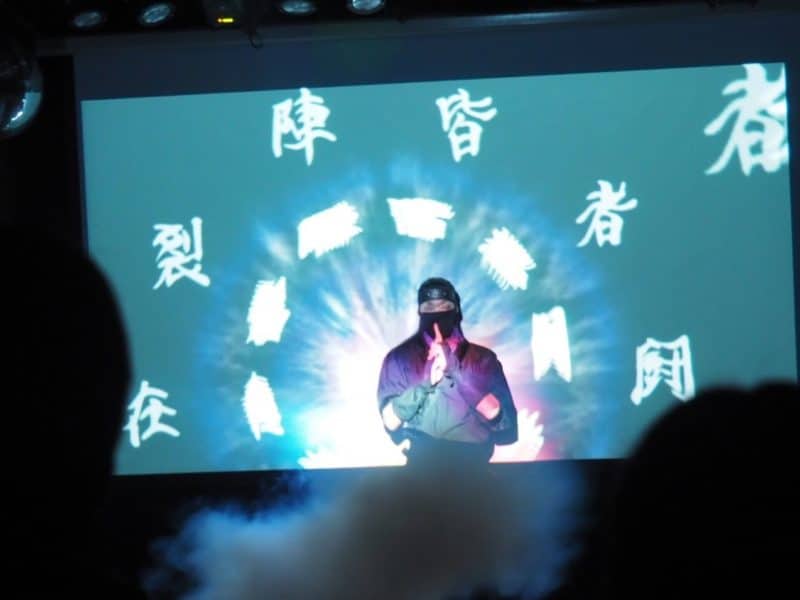
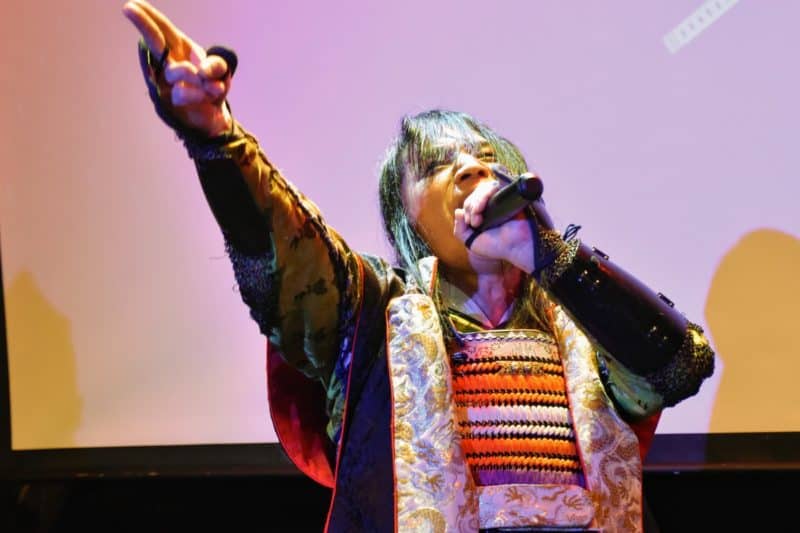
Motonari is the leader of the Aki Hiroshima Bushotai gang and takes center stage. Under Mori Motonari, of the ‘tale of three arrows’ fame, the Mori clan expanded their power base from a small enclave in the north of what is now Hiroshima Prefecture to encompass most of western Japan.

In the show he is flanked by his second son, talented general, Kikkawa Motoharu and Motonari’s grandson Terumoto who established Hiroshima Castle. Only a few short years after building his castle, Terumoto backed the wrong side in the pivotal battle of Sekigahara in 1600 and the Mori clan’s influence was heavily curtailed and they were consigned to the area Hagi on the Japan Sea coast of what is now Yamaguchi Prefecture.
Perhaps because of their eventual defeat, outside of Japan, the Mori are only really known to Japanese history buffs and role play gamers. There is some English explanation and screen subtitles to explain the background to what is going on on stage, but it doesni’t go very far. Then again, this isn’t a museum and you don’t come to a Samurai Ninja Theatre to study! The Samurai Ninja Theatre is best enjoyed for what it is, a fun, at times kitsch, cosplay romp of song, dance and sword play.
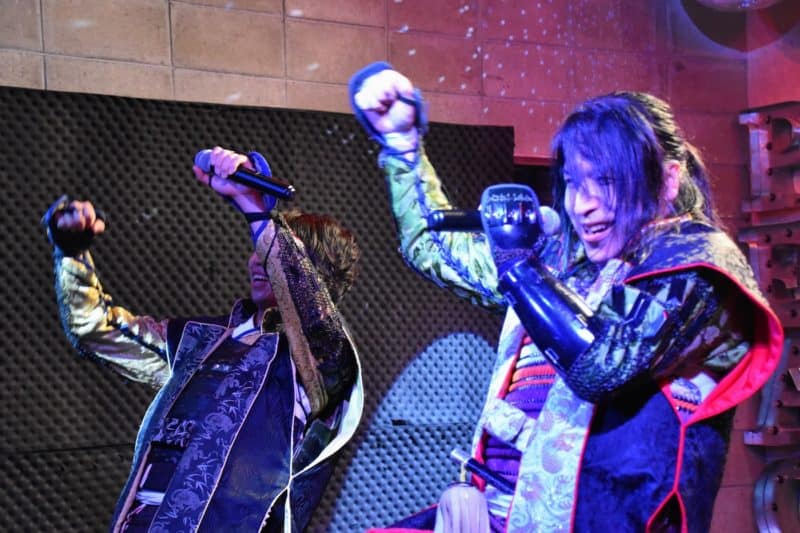
After the interval, the audience is treated to what the Aki Hiroshima Bushotai do best: Choreographed samurai-idol style dance routines to pumping pop and rock rhythms accompanied by vocal delivered with passion, stylistic poses, clenched fists and lots of flashing lights. Those with heart conditions who are not confident they can handle the power of the performance are advised not to sit near the front!
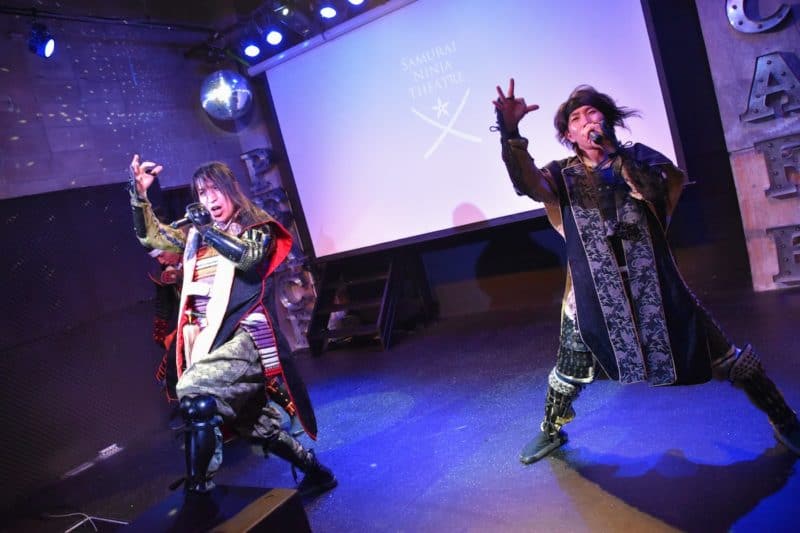
Watching the hardcore fans to clap and sing along with all the words while waving Aki Hiroshima Bushotai fans and glow sticks is almost as much fun as the show itself and you find yourself carried along by their enthusiasm, joining with the battle cry of hyaku-man-isshin (‘the power of a million hearts’) as you punch the air.
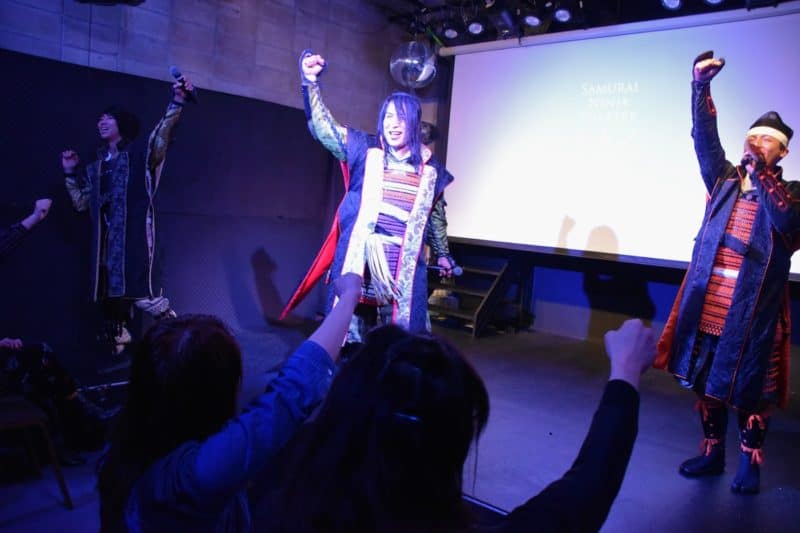
One interesting production choice is the way that *other* quite important historical event for which Hiroshima is known all over the world is only alluded to. Text on the screen briefly explains demise of the Mori in 1600 and then jumps to present day Hiroshima, to which people from all over the world come to visit. There is no mention of the A-bombing or the events that lead up to it, but petals fall against the backdrop of an image of Hiroshima Castle while a dancer performs in a gown decorated with orizuru origami peace cranes.

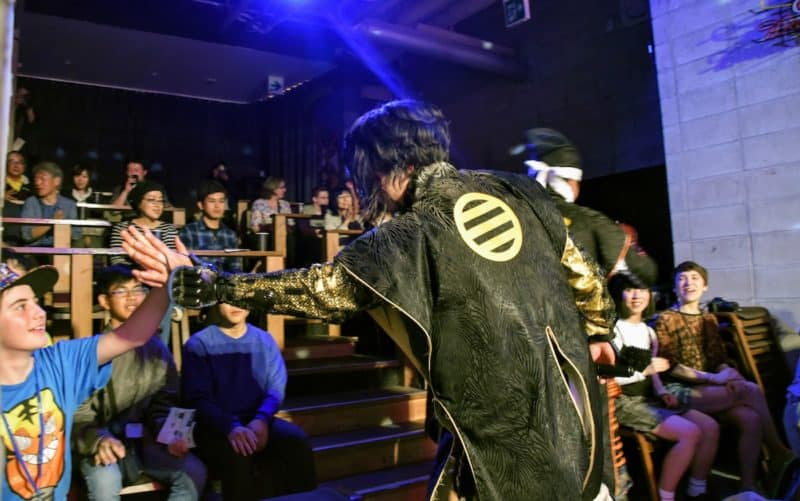
After the show, those who have paid an extra ¥500 on admission can have a photo taken with the group dressed in either samurai armor or kimono, which makes for a great souvenir of your evening.
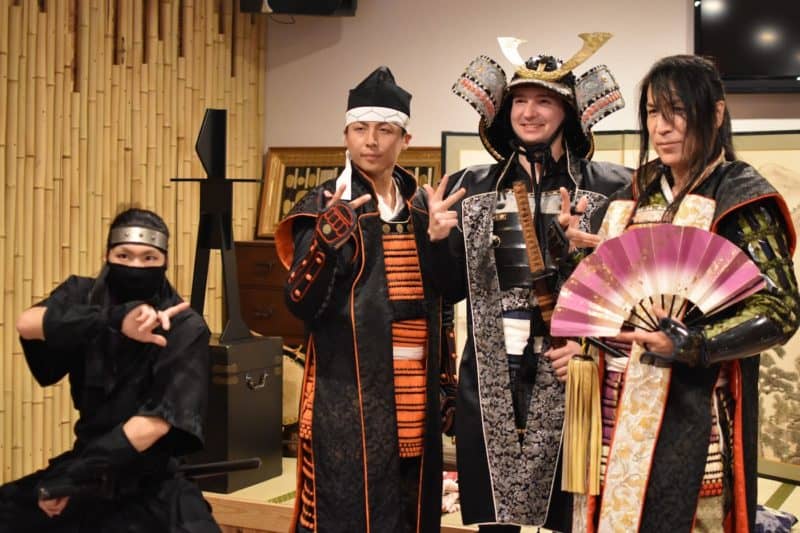
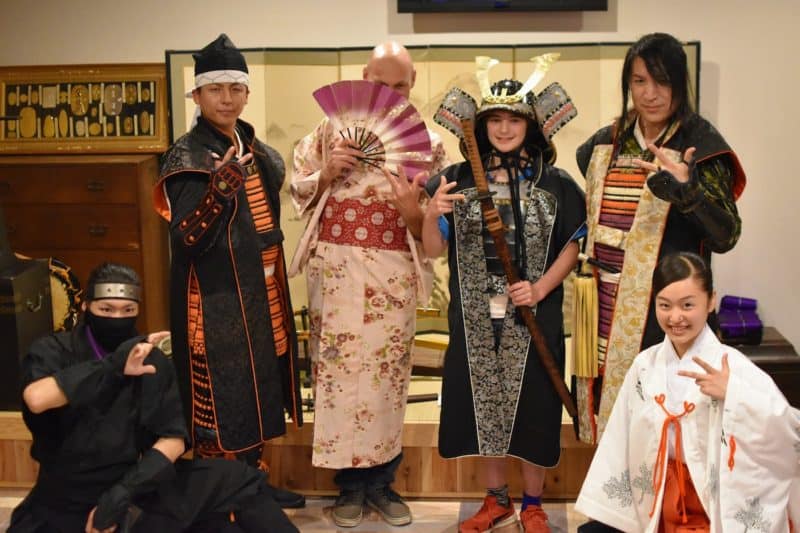
Souvenir T-shirts are also on sale.
